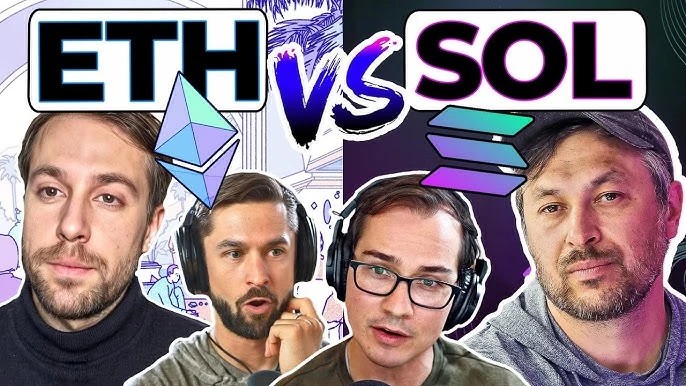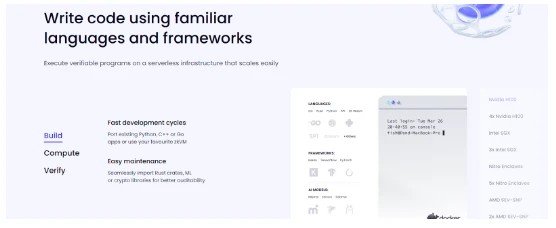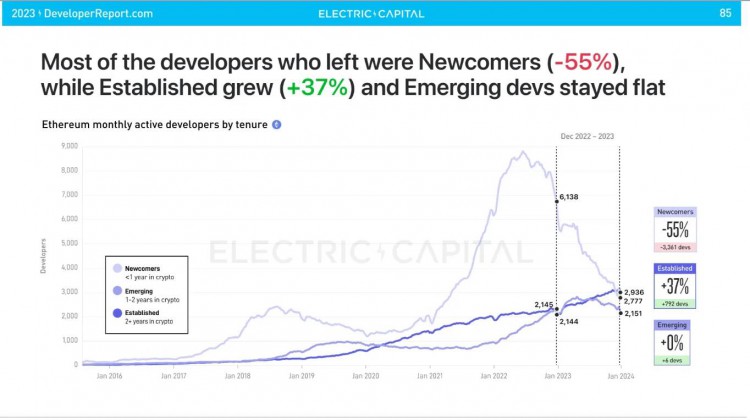摘要:WhilemanyunderstandEthereum’smore“modular”architecture—relyingonLayer2stocompletespecifictasks—asstandingindirectcontrasttothe“monolithic”natureofotherhigher-throughputnetworkssuchasSolanaorAvalanche,...
Manta Pacific 联合创始人 Kenny Li 表示,目前存在的 44 个活跃的以太坊第 2 层区块链中,“只有少数”会在五年内仍然存在。
根据L2Beat 的数据,目前共有 44 个活跃的以太坊 Layer2 网络,总锁定价值 (TVL) 为 369.2 亿美元,其中 Arbitrum (ARB) 以 145 亿美元的 TVL 排名第一。
然而,Manta Pacific 首席运营官兼联合创始人 Li 声称,未来只为 Manta、Celestia 和 Cosmos 等“模块化”区块链铺平道路。
然而,这种观点的批评者认为,该术语只是一种“营销噱头”,网络的成功与其开发方法和可扩展性无关。
“单一”BTC 和 ETH 杀手
在接受 Cointelegraph 采访时,Li 认为,以太坊网络上大量新的 Layer 2 正在绘制与过去比特币和以太坊网络“分叉”相同的路径,但没有一个“幸存”。
“对于所有的比特币分叉——比特币现金和 BSV——他们都采用了现有的技术并对其进行了分叉,”李解释道。
“他们说:‘你知道吗。我们将对它进行一些小的改变。通过对其进行这些微小的改变,我们将创造出“比比特币更好”的东西。”
“快进到 2024 年,只剩下比特币了。没有其他比特币分叉社区具有任何可比的指标,也没有任何可比的社区甚至接近原始比特币。”
Li 补充道,2016 年以太坊也发生了同样的事情,当时 EOS 和 NEO 等新网络试图通过提供替代的 EVM 和 VM 环境来将自己定位为“以太坊杀手”,这些环境试图对现有的以太坊生态系统进行细微调整。
在李看来,所有比特币和以太坊“分叉”的核心问题是它们都是“整体”构建的,这意味着它们不允许快速集成和采用随着时间的推移而出现的新技术。
“他们都是整体建造的,他们发生了什么,对吗?时间快进到 2024 年。以太坊是主导者。”
“五年左右的时间我们会看到这么多 L2 吗?我不这么认为。只有少数人能活下来。”
模块化区块链是导出其主要任务的网络;外部区块链的执行、结算、共识和数据可用性,支持者称这提供了更大的设计灵活性。
相比之下,整体区块链优先考虑单系统架构,该架构处理网络单层内的所有任务。
然而,有些人认为根本没有任何理由争论“模块化与整体式” 。
也许这都是“营销噱头”
Austin Federa, the head of strategy at the Solana Foundation, described the relatively new debate around the two terms as a “marketing stunt” introduced by Celestia.
While many understand Ethereum’s more “modular” architecture — relying on Layer 2s to complete specific tasks — as standing in direct contrast to the “monolithic” nature of other higher-throughput networks such as Solana or Avalanche, Federa disagrees with the use of the term entirely.
“We have to remember that the modular versus monolithic debate is all a marketing stunt,” said Federa. “Celestia created this distinction between modular and monolithic. It’s not a natural distinction and there’s nothing organic about it.”
Li claims that Manta — launched on Jan. 18 — could be described as the “first and largest” modular layer-2 network on Ethereum, as it uses Optimism’s OP stack and utilizes Celestia for data availability (though Ethereum co-founder Vitalik Buterin would say that makes it a “validium” and not a genuine L2).
At the time of publication, Manta is the fourth largest layer 2 network in terms of TVL, only recently overtaken by the new layer 2 Blast, which launched its mainnet on March 1.
“We don't build in a monolithic way. We haven't built anything in terms of core architecture just by ourselves,” Li explained.
Related: Bitcoin layer 2s among catalysts of this bull cycle, Bitcoin OG says
“We’re taking a very modular approach which means that we’re able to essentially plug and play different technologies that are available at different times so we can continue to adapt to changing demands,” Li added.
Federa, however, argues that there’s no need to make a distinction between the two approaches.
“The truth is, there is no such thing as a modular system, and there's no such thing as a monolithic system.”
Federa explained that a monolithic network is simply an “integrated” blockchain where tasks are handled in a single layer, whereas “modular” — or “fragmented” networks — complete the same functions across several layers and don’t actually contribute considerably to the success or outcomes of a given network.
“It's like how the terms ‘pro-life’ and ‘pro-choice’ are, are two positive spins on something, right? Like no one is actually anti-life or anti-choice, right? This is all just marketing terminology to put forward a certain narrative that people want to talk about.”
“I think that setting up these things as being at odds with one another is not a particularly useful or accurate way to think about these systems. They’re just different software architecture choices that are not actually that different at the end of the day,” Federa said.
Web3 Gamer: Sweatcoin says shaking is faking, MotoDEX review, Gods Unchained 2024




